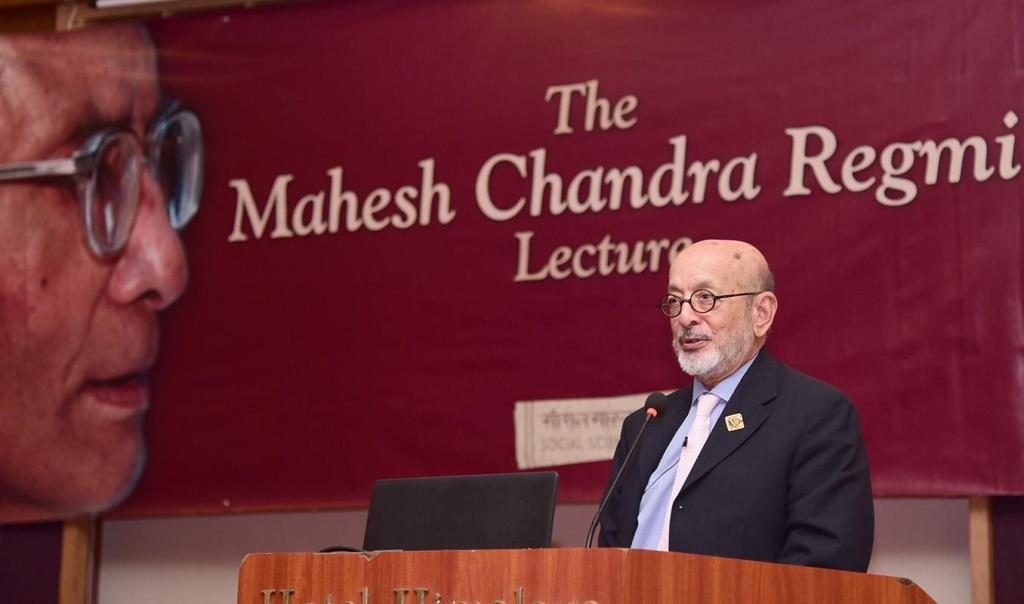Lecture Series
Nepal Saṃvat and Vikrama Saṃvat: Discerning Original Significance

The Mahesh Chandra Regmi Lecture 2018
30 August 2018, Hotel Himalaya, Kupondole, Lalitpur
Nepal Saṃvat and Vikrama Saṃvat: Discerning Original Significance
by Gautama V. Vajracharya
A few ancient customs have managed to survive even after their symbolic significance was completely forgotten many centuries earlier. A comparative study of Vedic literature and the traditional culture of the Kathmandu Valley reveals that some Newar rituals of the Valley, such as the gāi jātrā and the New Year’s celebration in autumn, are, in fact, older than the arrival of Vedic Aryans in India around 1500 BCE. I have elsewhere demonstrated that Vedic literature contains not only aspects of Indo-Iranian culture but also components of the South Asian monsoon culture that flourished in the subcontinent long before the arrival of the Sanskrit-speaking Vedic Aryans. For instance, the pre-Vedic people of South Asia believed that the sky is a mother or mothers (mātaraḥ). Just like cows, they conceive in autumn and give birth to rain babies at the onset of the monsoon. This ancient concept, which has latently yet noticeably survived in the culture of the Valley, is the origin of Nepal Saṃvat, where the word, saṃvat, is an abbreviated form of the Vedic technical term saṃvatsara, which means ‘a period of gestation’.
The Vikrama Saṃvat, on the other hand, has a different story. It is directly related to the celebration of the summer equinox. Contrary to popular view, ‘Vikrama’ is not a name of an Indian or Nepali king but the cosmic movement of the creator-god who stands stretching his legs from the netherworld to the heavens but switches the position of his legs twice a year, at the beginning of summer and winter. The story of Trivikrama Viṣṇu described in the classical period (ca. 3rd-century BCE–13th century CE) in Sanskrit literature originated from this much earlier Vedic legend. Trivikrama literally means ‘three steps’.
It is true that some important Vedic rituals discontinued in India even before the Gupta period (ca. 3rd–7th centuries CE). The correlation that we see between Vedic literature and the Newar culture of the Kathmandu Valley is, indeed, utterly unexpected. In this illustrated talk, I will present textual and visual details to explain the logic behind this correlation.
Listen or download lecture in audio format
Gautama V. Vajracharya is a distinguished Sanskritist and scholar of South Asian languages, art and culture. Professor Emeritus at the Department of Art History, University of Wisconsin-Madison, Professor Vajracharya taught History of South Asian art for 23 years before his retirement. In addition to teaching, in his long and illustrious career, he has made outstanding contributions to scholarly knowledge on Nepali art and iconography. As a grantee of the prestigious John David Rockefeller III Fund Grant for research, he studied Nepali and Tibetan works at the Los Angeles County Museum of Art. He went on to receive a Master’s degree in art history from the Claremont Graduate School, California and a PhD in South Asian Languages and Literature from the University of Wisconsin, Madison.
His latest publication is Nepalese Seasons: Rain and Ritual (2016), written for the Rubin Museum, New York, detailing the interrelationships between local deities, seasonal festivals, rituals and the annual monsoon as part of the 2017 exhibition ‘Nepalese Seasons, Rain and Ritual’, which he himself curated. Other of his publications include Frog Hymn and Rain Babies: Monsoon Culture and the Art of Ancient South Asia (2013), Himalayas: An Aesthetic Adventure (2003) (co-author), and Watson Collection of Indian Miniatures at the Elvehjem Museum of Art: A Detailed Study of Selected Works (2002)
